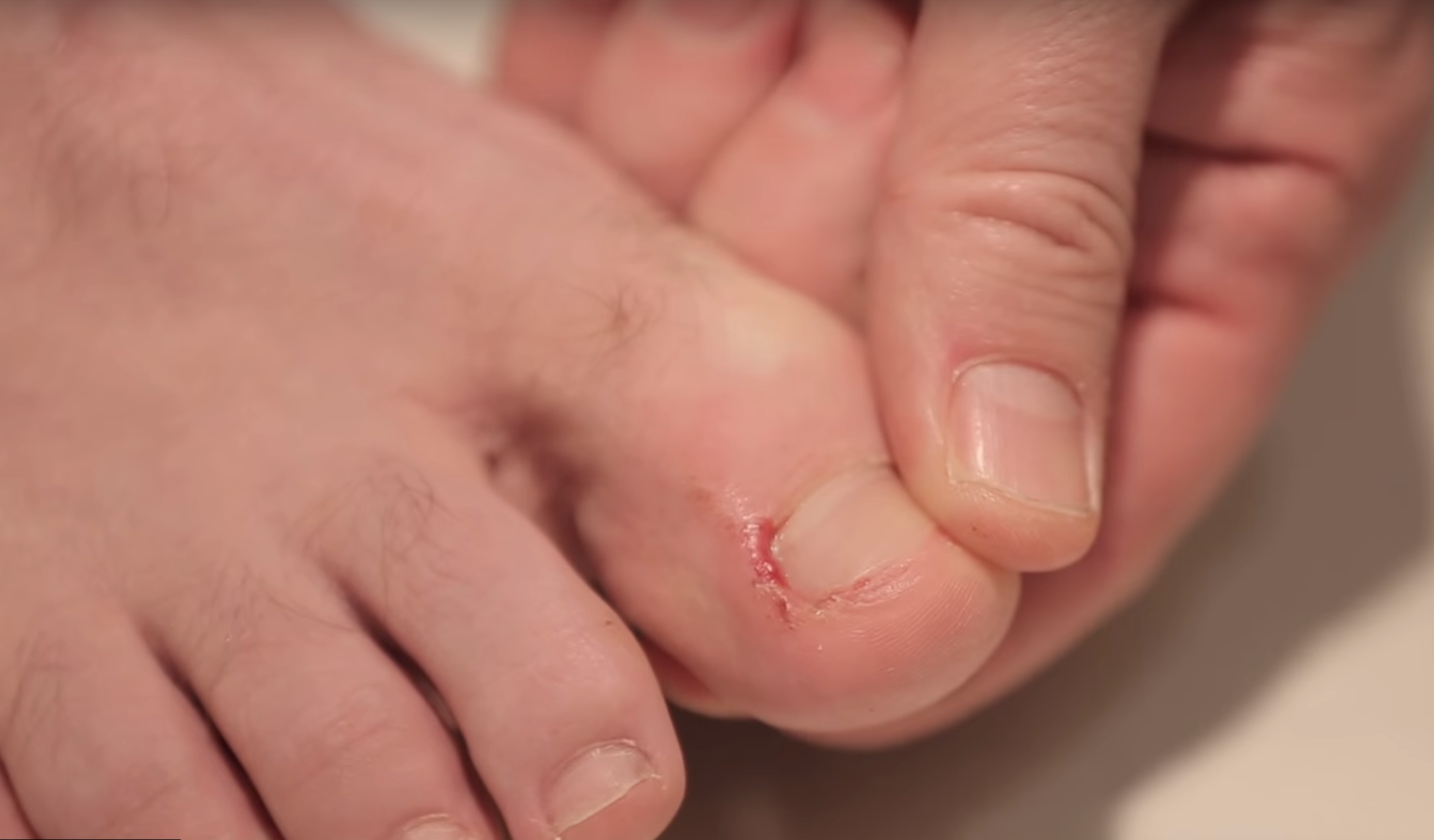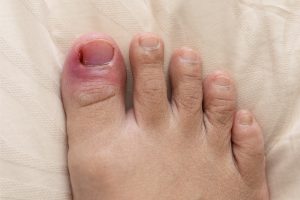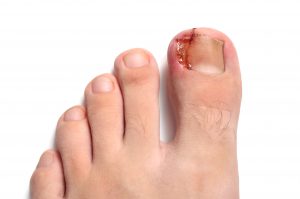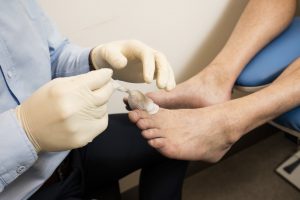

Ah, ingrown toenails. It never ceases to amaze our patients when we remove that ingrown piece of toenail how such a small piece of nail can cause such immense pain – not to mention swelling, redness and often, the infection that follows when it is left untreated.
As one of our top five conditions that we see and treat every day here at My FootDr, here’s the low-down on ingrown toenails, why you may be getting them multiple times, and how you can fix that problematic toenail today – permanently.
Is my toe pain from an ingrown toenail?
If you’re wondering if your toe pain is from an ingrown toenail or something else, keep reading. Like the name suggests, an ingrown toenail develops when part of your toenail pierces the skin that surrounds the nail, and grows into it as the nail naturally grows out.
Once it has pierced the skin, the side of the toe usually becomes swollen, red and painful to touch. The swelling actually results in the problematic piece of nail moving deeper into the skin, while creating less space inside of shoes and socks, often making wearing narrow footwear quite painful when it pushes against the inflamed toe.
Sometimes, discharge or blood may also exude from the toe, where the nail has pierced the skin. If an infection develops, this discharge may be white, yellow or green in colour – and may have an unpleasant odour.
Ingrown toenails can affect one or both sides of any nail, though the big toes are most often affected. They do not discriminate between age and gender, and anyone can be affected.
Why do some ingrown toenails recur?
Understanding why some ingrown toenails ‘come back’ or why multiple toes may be affected starts with understanding the potential causes of ingrown toenails:

1. A poor nail-cutting technique
Nails should always be cut in a straight line. If toenails are curved down deep into the sides, this may encourage the development of ingrown toenails.
2. ‘Picking’ at the nails
If you tend to pull at your nails instead of leaving a clean, smooth line using nail scissors, you may unknowingly leave small nail spicules down the sides of the nail – often in a place you can’t see or don’t immediately notice. While it won’t cause pain straight away, as the nail grows, the nail spicule may penetrate and grow into the skin. If you keep picking at the nails and leaving sharp or jagged edges, you may get a regular stream of ingrown toenails. This is a pattern we most often see in school-aged kids.
3. Tight or narrow footwear
When you wear ill-fitting footwear, specifically those that push against the big toe and cause the skin to push into the nail, you put yourself at greater risk of developing ingrown toenails. This is because the nail does not have sufficient space to grow out normally, making it more likely to rub against the skin and penetrate.
4. Family history
It may simply come down to the shape of your toenails. We all have variations in the shape of our nails, and some are more ‘pincered’ or curved than others. This may make you more vulnerable to developing ingrown toenails – and the same may apply for your family members, too.
How can I fix my ingrown toenail – today?
 Let’s start with addressing a common misconception: that simply soaking it in salty water and leaving it be will eventually lead to it fixing itself. When you consider why your toenail is sore in the first place – from a piece of nail that has entered the skin, you’ll understand why salty water isn’t a suitable or effective solution. We see many ingrown toenails that have been left for weeks without success, while its owner struggles with pain while wearing shoes, and may even be unable to tolerate the pressure from the bedsheets.
Let’s start with addressing a common misconception: that simply soaking it in salty water and leaving it be will eventually lead to it fixing itself. When you consider why your toenail is sore in the first place – from a piece of nail that has entered the skin, you’ll understand why salty water isn’t a suitable or effective solution. We see many ingrown toenails that have been left for weeks without success, while its owner struggles with pain while wearing shoes, and may even be unable to tolerate the pressure from the bedsheets.
Fixing your ingrown toenails starts with removing the troublesome, penetrating nail edge – and not leaving any spicules or pieces of it behind. The safe, quick and easy removal of these spicules is one of our specialities here at My FootDr – and it doesn’t require any anaesthetic – unless you want it! It’s a simple process that is done in your treatment chair and you’ll feel instant relief – though you may have some residual tenderness from the swelling until it settles and heals. Once the nail is removed, the skin can heal, and your toe can return to its former pain-free state.
And how can I keep it from coming back again in the future?
As our goal is to not only treat the problem but to help prevent you from struggling with the problem again in the future, we also offer the permanent correction of ingrown toenails. This is done through a procedure that we perform in the clinic called a partial nail avulsion.
During a partial nail avulsion, we start by removing the small section at the side of your nail that tends to ingrow. Don’t worry – your toe is completely numb from the anaesthetic! Next, we apply a chemical that is designed to destroy the nail-growing cells in this small section of nail. Hence, that nail edge does not grow back. You still maintain a fairly normal nail appearance – one side of your nail will just look straight and a little shorter.
The benefits of this procedure are:
- Permanent correction of the problem
- Pain-free throughout the procedure
- Minimal or no post-operative pain
- No stitches are required
- Fast healing
- Cost-effective
The procedure has a success rate of over 90%, so it’s a proven and successful option for stubborn or recurring ingrown toenails.
Ready to get you ingrown toenail treated?
We make treating ingrown toenails simple and easy – and it’s likely that we can get you in on the same day! To book your appointment, call us on 1800 FOOT DR or book online here.


